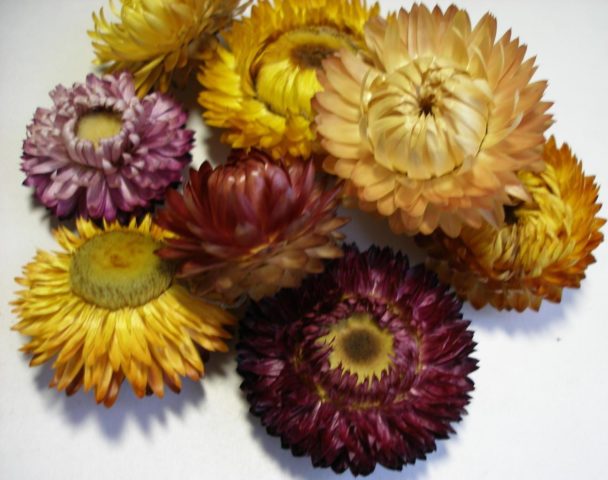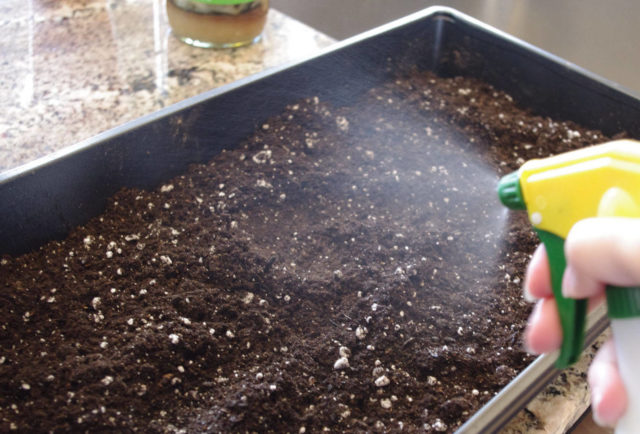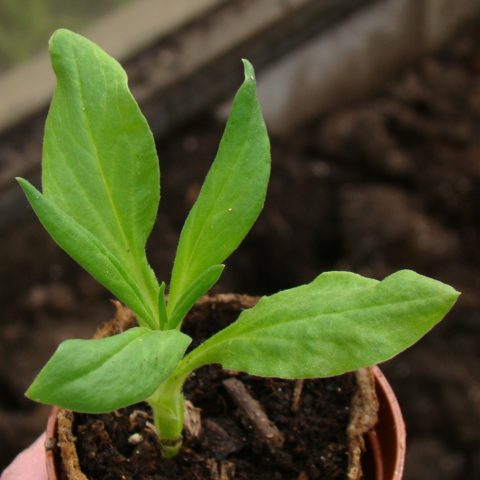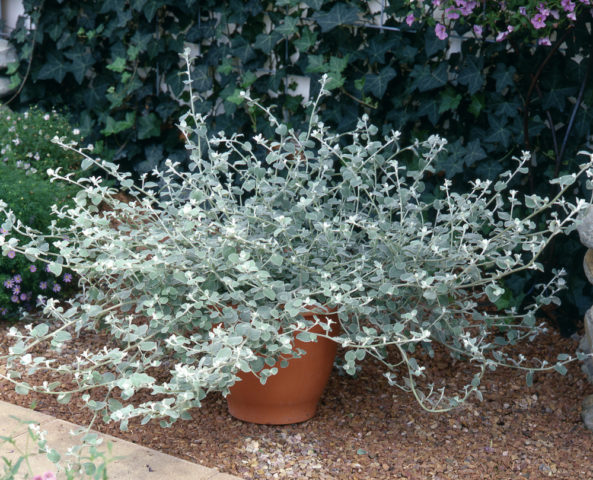Content
Growing helihrizum from seeds is the best breeding option for annual immortelles. You can sow directly into the ground or pre-grow seedlings. The second method is used more often, especially in regions with long, cold winters. Perennial varieties are more efficiently propagated generatively (by division or cuttings).
Growing seedlings of gelichrizum
The advantage of the seedling method is that it shortens the time to flowering. Gelikhrizum is characterized by poor resistance to stress, reacts negatively to sudden temperature drops in spring at night and during the day. Sowing seeds in an open area may not give a positive result, seedlings damaged by recurrent frosts are not restored, the plant dies.
Getting seedlings is especially important for regions with a long winter period, for example, in Siberia, the Urals, in the Central regions. The seedling method eliminates the loss of planting material, since Gelichrizum can be planted at any time when the threat of night frosts has passed. The plant develops well in indoor conditions. After transplantation, it takes root in the designated place.
To grow gelichrizum from seeds at home, you need to purchase or collect planting material yourself. Most of the crop varieties bloom from mid-summer to October. Seeds are harvested in mid-September, when the central part of the flower darkens and begins to dry. Large heads are cut and laid out on the surface.

When the seeds are fully ripe, they will spill out on their own after a little shaking of the flowers.
When to plant gelikhrizum for seedlings
The time of planting seeds for obtaining planting material depends on the climatic characteristics of the region. Gelichrisum is determined on the flower bed at the age of 90 days, by which time the root system will be formed enough to calmly transfer the transplant.
Thanks to this biological feature, the growth of the planting material can be controlled. If the spring is late, so that the seedlings do not stretch out, they are placed in a room with a lower temperature. Seeds germinate in 3 weeks, after fourteen days of vegetation, gelichrisum is ready for picking. In regions with a temperate climate, seeds are sown for seedlings in March, in the south - in April.
Preparation of containers and soil
The seeds of gelichrizum are laid in special containers for seedlings or in wooden boxes. The container should be low (10-15 cm). If you need to get a large number of gelichrizum seedlings, take several containers or wide boxes. Tara is poured over with hot water. Used pots are washed with soapy water and treated with manganese or an antifungal agent.
It is recommended to take fertile soil for sowing seeds. You can mix peat, sand and compost in equal parts. The soil is calcined, allowed to cool and mixed with a complex of mineral fertilizers, then small pebbles are added.

Moisten the surface before sowing
Seeding Algorithm
The seeds of gelichrizum are rather small. To facilitate sowing, they are treated with a manganese solution from a spray bottle and mixed with sand.
Sequence of work:
- Seedling containers are filled with prepared substrate.
- The surface is leveled, moistened.
- Sand with seeds is covered with a thin layer.
- If the planting material is not in the form of a mixture, make longitudinal furrows with a depth of 0.5 cm, sow helihrizum and lightly cover it with soil.
- Pour with a solution with the addition of a nitrogen agent.
The containers are covered with a film, be sure to watch that condensation does not accumulate.
Seedling care
After sowing, the containers are placed in a room with a temperature of at least +18 0C. Make sure that the soil surface is slightly damp, a large amount of water is not allowed. When the gelichrizum germinates, the temperature regime is increased, the containers are placed in a lighted place, and the seedlings are provided with a daylight hours of at least 16 hours. Watering is carried out every three days. Fertilize with a nitrogen agent (if not used for sowing).
When 2-3 leaves are formed, strong helihrizums are selected from the total mass of the shoots and dive. For 14 days before placement on the site, the seedling needs adaptation. The containers are taken out into the open air, first for 30 minutes, then the residence time is increased. If there is a greenhouse, boxes with seedlings are placed in it and left until planting.

In order not to stress the plant once again, it is better to pick the seedlings in peat glasses and plant them on a flower bed together with them.
Planting gelichrizum in open ground
The growth of gelichrizum (pictured) will depend on the correct planting of the flower and proper care. If the biological requirements of the plant are taken into account, there will be no problems with growing.
Timing
The working time depends on the method of planting. If gelikhrizum is sown directly to the garden without first growing seedlings, then they are guided by the climatic features of the region. In the south, the plant is sown in April, in areas with late unstable spring - in the second decade of May. If the planting was carried out earlier, the bed is covered with a film for the night, and it is removed for the day.
When the temperature is set at +200C, seedlings of gelichrizum can be placed on the site, then the plants will quickly begin to gain green mass and bloom in time. For a warm climate - this is the beginning or mid-May, in a temperate climate - late spring, early summer.
Site and soil preparation
Gelikhrizum is a warm and light-loving plant, absolutely does not tolerate shading and waterlogged soil. The area for culture is set aside open, without large-sized trees nearby. The composition of the soil for gelichrizum is not fundamental, a prerequisite is that the land must be with good air circulation, drained. Lowlands, ravines, the close location of groundwater for planting helihrizum is not suitable. The culture will not be able to bloom on scarce soils; it will die on waterlogged soils.
2 weeks before planting, the allotted area is dug up together with compost, fine pebbles and mineral fertilizers are introduced: phosphorus, potassium, phosphate and urea.
Direct sowing in the ground
In the prepared area, small furrows are made and the seeds of gelichrizum are distributed, according to the same scheme as for seedlings. Set low arcs and cover with foil overnight. When sprouts appear, the shelter is removed. Plants are watered with a small volume of water every other day. The topsoil should have time to dry out before the next sprinkling.
When gelichrizum enters the stage of the third leaf, it is seated in a certain area. Can be sown with linear planting, thinned out after emergence and left to grow without transfer. The latter method is only suitable for annual varieties of Gelichrizum.
Transplanting seedlings
Seedlings are placed at intervals of 20 cm. The planting recess is made in accordance with the size of the root system.If the seedlings are in peat glasses, they are completely covered with soil. When placing perennials, the bottom of the pit is covered with a drainage cushion; for annuals, this measure is not necessary. After planting, the soil is slightly compacted and well watered.

Gelichrizum is often used in vertical landscaping design
There are several varieties of crops for ampel cultivation. For example, planting of petiolate gelichrizum is carried out in a flower pot, care for it will be standard. In the summer, the plant is taken out to the balcony, terrace, and for the winter the plant is left in an unheated room at a temperature of + 4-50FROM.
How to grow gelichrizum
The agricultural technology of the culture is simple, if the seedling is placed in a sunny, dry area, then the care for it is minimal. The cultivation of annual and perennial varieties differs in terms of feeding and preparatory measures for the winter.
Watering and feeding schedule
A drought-resistant crop tolerates a lack of moisture better than its stagnation. Basically, helihrizum has enough seasonal precipitation. If the summer is abnormally dry, water the plant no more than twice a week at the root.
Top dressing for annual varieties is not carried out. The immortelle has enough food laid during planting. If the plant looks weak, you can fertilize with superphosphate. Perennial varieties are fed with urea in spring, during budding with phosphate, potassium is given for the flowering period. Phosphorus and compost are introduced in autumn.
Pruning
The culture retains its decorative effect for a long time. The color of the flowers fades, but they do not lose their shape until frost. When the green mass dries up, the annual plant is completely removed from the site along with the root system. Perennial varieties do not belong to evergreens; the aboveground part of them dies off at the end of the season. Gelichrizum is completely cut off when it loses its decorative appearance.
Wintering
Only perennial immortelles hibernate. The culture is characterized by low frost resistance, therefore, it requires insulation in regions with a cold climate. The root system is the weakest point in Helichrizum. If it is damaged, the culture is not restored.
Ampel varieties are brought into the room, perennials are left in an open area. After pruning and feeding, the plants are spud, mulched and covered with spruce branches. You can install arcs, cover the immortelle with a film and only then use coniferous branches.
Diseases and pests
The culture is highly immune. With sufficient lighting and low air humidity, it does not get sick. If gelichrizum is in the shade and on waterlogged soil, white rust is possible. The plant is transferred to another place and treated with an antifungal agent. Aphids parasitize pests, they get rid of it with "Aktara". If burdock caterpillars are found, they are sprayed with "Kolibris".
Conclusion
Growing helihrizum from seeds is the most common way to propagate a culture. You can plant directly in the ground or sow seeds in containers for seedlings. The immortelle is unpretentious in care, is characterized by high immunity, calmly tolerates a moisture deficit. One of the disadvantages of the culture is low frost resistance, therefore, insulation for the winter is required.








